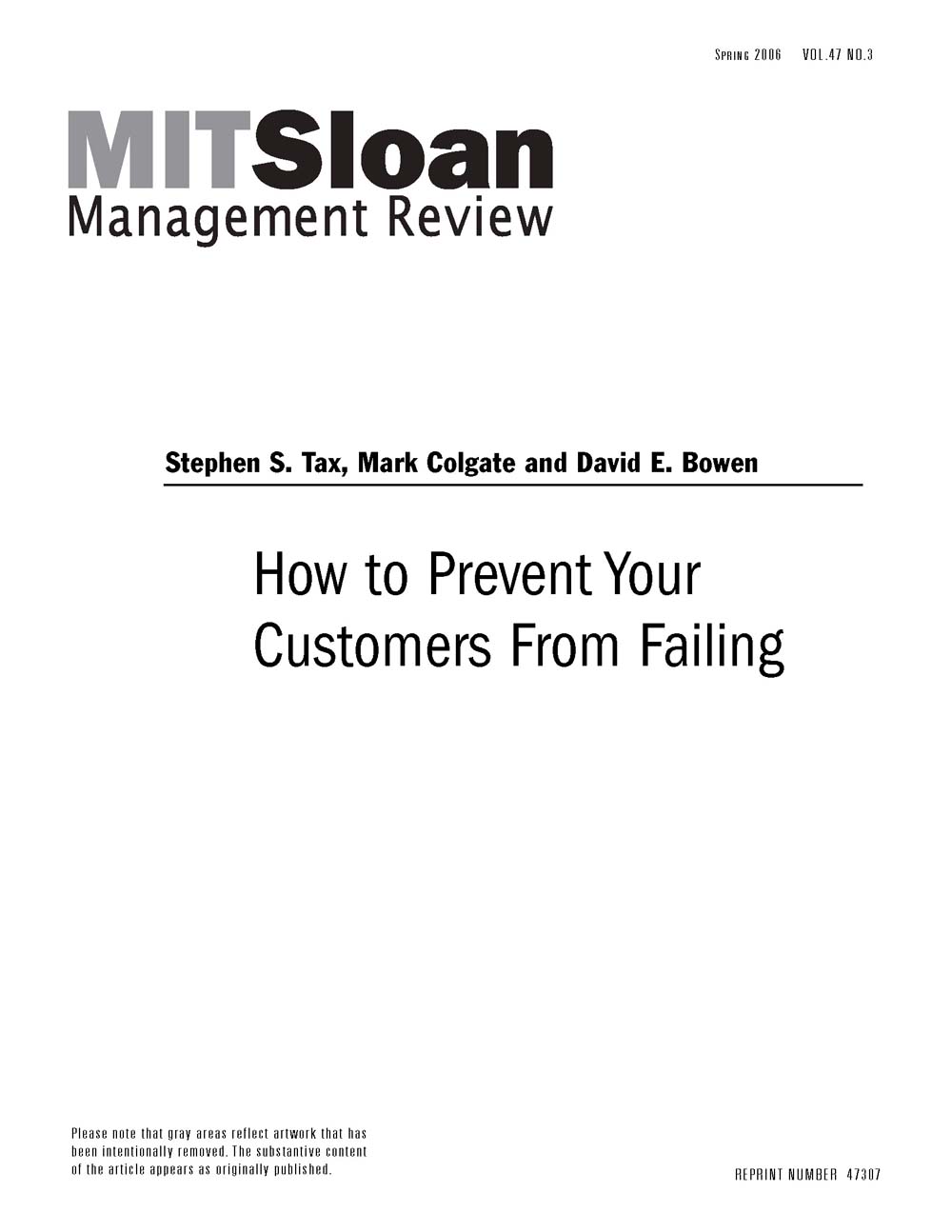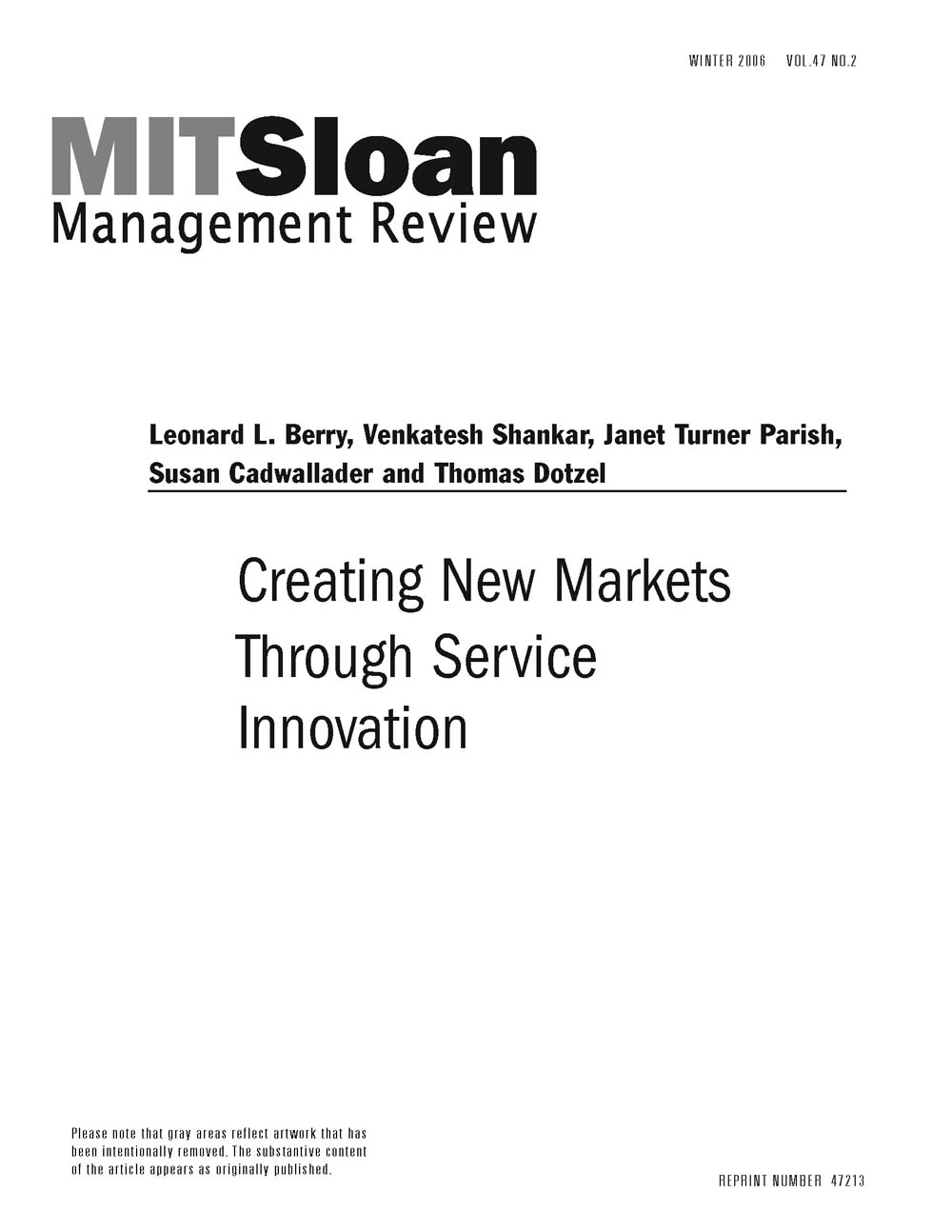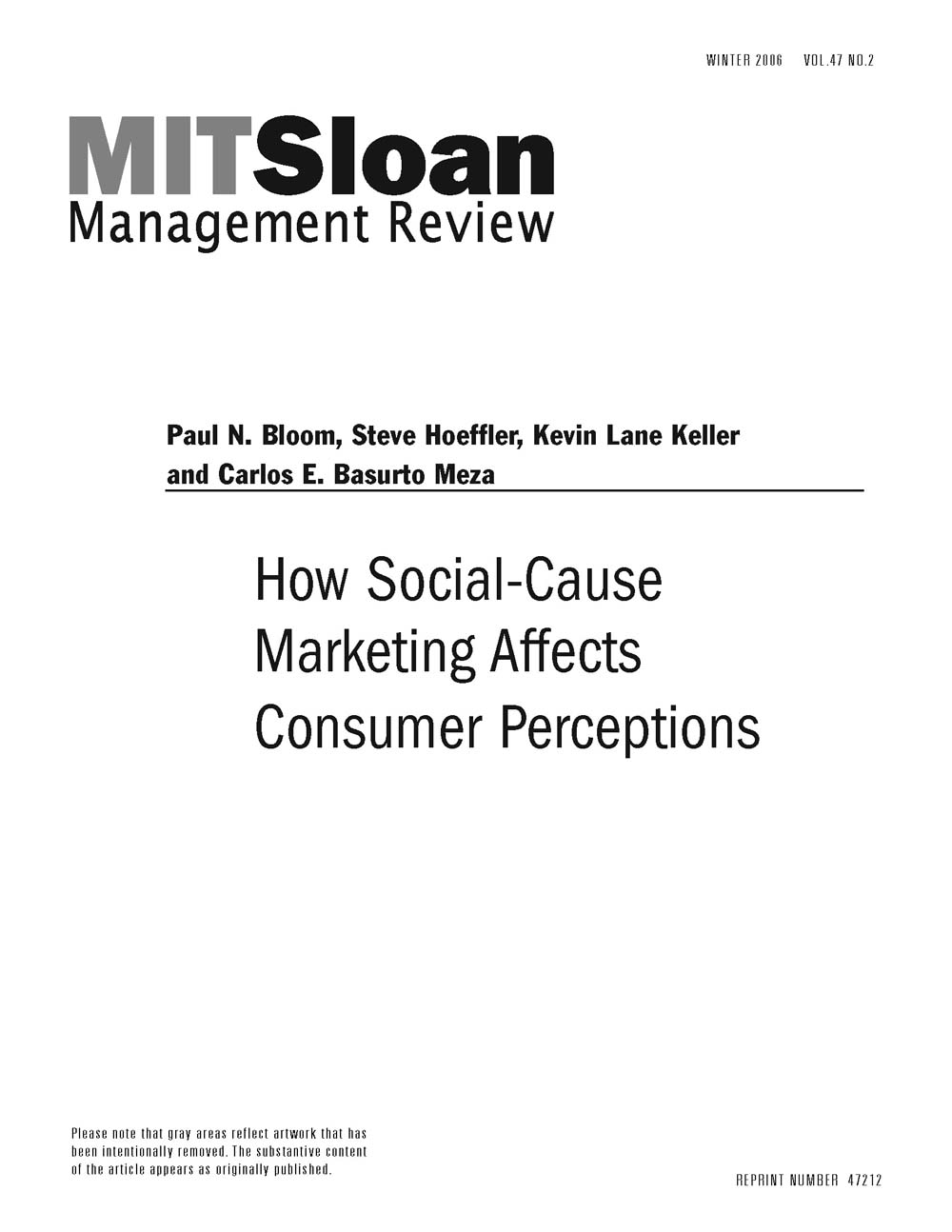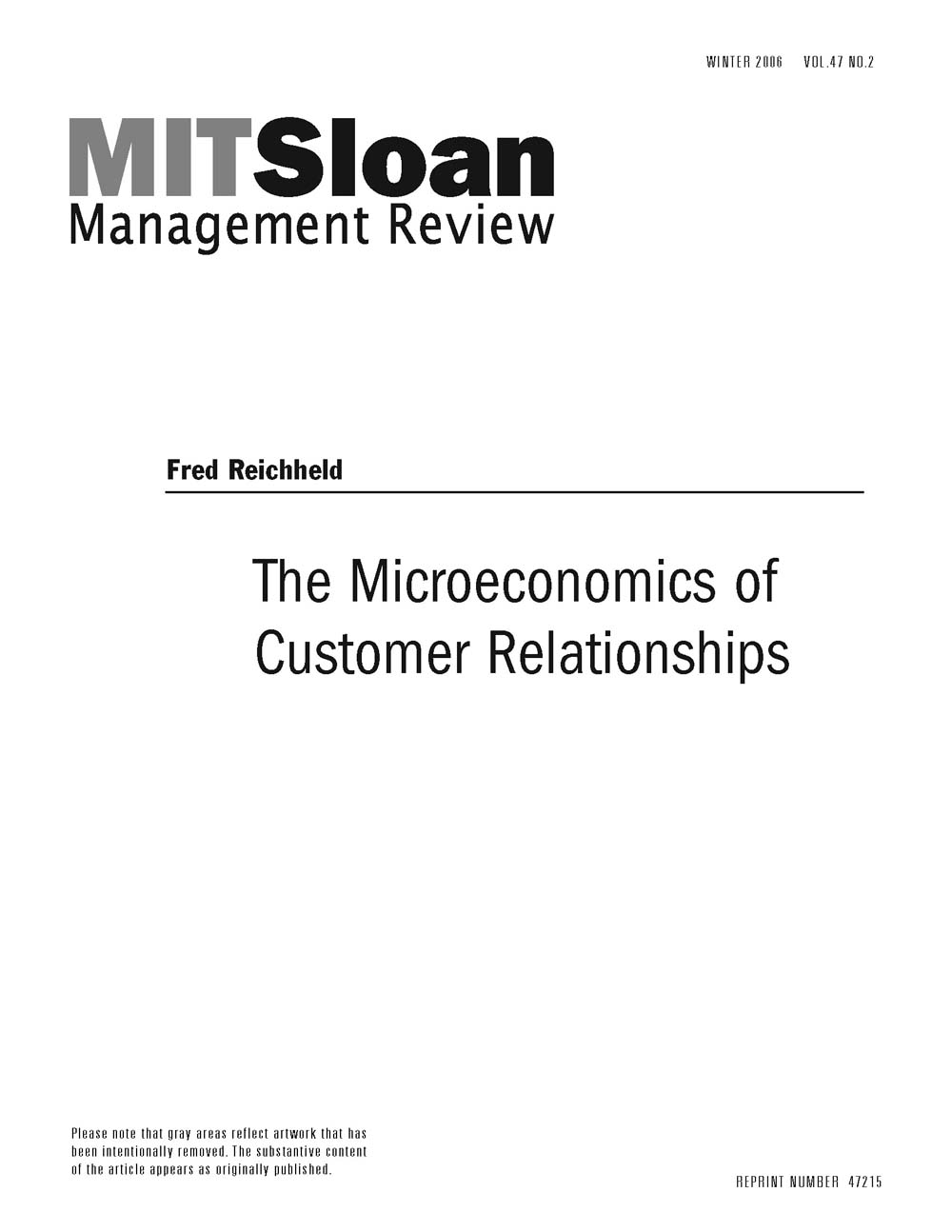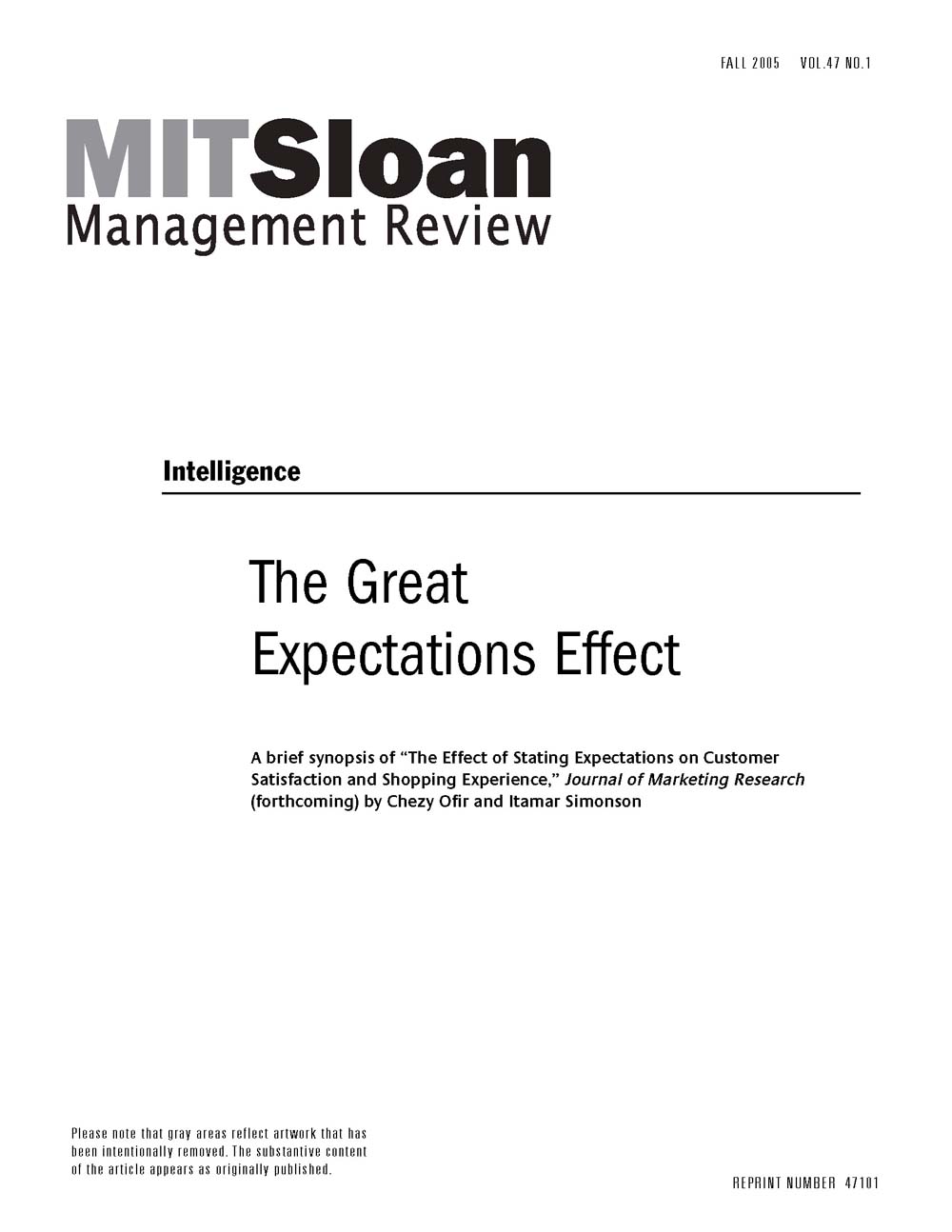As companies use self-service technologies, responsibility for service quality shifts to customers.
Marketing
Page 17 of 23
-
Satisfaction Begins at Home
To find out how well you are serving your customers, ask your employees.
-
-
Creating New Markets Through Service Innovation
Service businesses now make up about 70% of the aggregate production and employment in the OECD nations, yet true innovation is rare in the service sector. Many companies incrementally improve their offerings, but few succeed in creating service innovations that launch new markets or reshape existing ones. The premise of this article is that by thinking about a service in terms of its core benefits and the separability of its use from its production, managers can more easily see how to outinnovate their competitors. Before they can do so, though, they must understand the different types of market-creating service innovations as well as the factors that enable them. The authors introduce and describe a two-by-two matrix whose taxonomy helps managers think strategically about service innovations that can create new markets. The dimensions of the matrix refer to the type of benefit offered and the degree of service separability. The article references best-practices examples including Enterprise Rent-A-Car, FedEx, eBay, Starbucks, Cirque du Soleil, Google, Southwest Airlines, Walgreens, Netflix and Barnes & Noble to illuminate each of the four cells of the matrix and explain the value to managers of understanding the dynamics of the cell that is most applicable to their service innovation efforts.
-
How Social-Cause Marketing Affects Consumer Perceptions
Case studies suggest that companies including Avon, Stonyfield Farm and Starbucks have benefited from marketing initiatives associating the company with a socially beneficial cause. But how should managers allocate dollars between social-cause marketing and other types of marketing programs? The authors use a market-research technique called "conjoint analysis" to help managers evaluate the relative benefits of various types of affinity marketing programs, including sponsorship of social causes, sports or entertainment events. Conjoint analysis involves creating a variety of hypothetical brand profiles that contain combinations of brand attributes; by asking consumers to rank the profiles, researchers can gain insights into how different brand attributes affect consumers' preferences. In several experiments, the authors used conjoint analysis to examine how consumers' responses to a brand of beer, milk or juice would be affected if the brand had a marketing affiliation with a social cause or with a sport or entertainment event. For some of the products studied, affiliations with social causes had more positive effects on consumer rankings than affiliations with sports or entertainment events. However, this was not always true; for example, it was not the case for the milk brands studied, suggesting that the effect of social-cause marketing initiatives may vary by industry. The authors also discuss how brand managers can use conjoint analysis to compare potential marketing initiatives.
-
Taming the Volatile Sales Cycle
Every sales cycle has some degree of inherent volatility. A big customer could, for instance, go bankrupt or a major deal could fall through. But there's one type of volatility that many executives seem to think is a kind of natural law: At the beginning of every quarter, sales tend to falter; at the end, they often surge. This roller coaster can be a huge problem when major deals fail to materialize at the end of the quarter, leaving a shortfall. According to the author, such kinks in the sales cycles can be smoothed out, but doing so requires a fundamental change in how sales activities are prioritized. The typical sales process is like a funnel: At the bottom are the deals that are nearest to being closed; in the middle are other prospects in the works; and above are numerous promising leads. Companies typically work their funnels from the bottom up. After all, why not concentrate on the surest opportunities first and leave the less certain ones for last? But that prioritization strategy is the fundamental cause of the sales roller coaster. The author of this article argues that for a more continuous -- and predictable -- revenue stream, firms should prioritize the three areas of the funnel in the following way: bottom, above and then middle.
-
The Marketing Consequences of Competitor Lawsuits
Traditionally, when managers have been considering whether to file a lawsuit, their attorneys have advised them on factors such as the likely costs of a suit and the probability of obtaining damages. However, the authors note, companies today may want to consider an additional factor: the possible marketing consequences -- positive or negative -- of a given lawsuit. In particular, the authors discuss the marketing implications of lawsuits between competitors or potential competitors. They consider the marketing ramifications of a lawsuit between two rival pizza chains, Pizza Hut Inc. and Papa John's International, over advertising claims made by Papa John's -- and conclude that publicity surrounding an initial verdict in Pizza Hut's favor (a verdict later overturned) generally conveyed Pizza Hut's perspective to the public, presumably with more credibility than similar advertising would have. The authors also examine a trademark dispute between Starbucks Corp. and the owner of the Old Quarter Acoustic Caf_, a bar in Galveston, Texas, which markets "Starbock" beer. In this case, they observe that Starbucks faced the marketing risk of appearing to be a bully. The authors also explore how large corporations in suits with smaller rivals may face a risk of negative publicity, while small companies may face financial risks.
-
The Microeconomics of Customer Relationships
Despite considerable research on customer retention and word-of-mouth referrals, it has always been difficult quantifying their contributions to the bottom line. Using a metric known as "net promoter score," the author believes firms can now measure the dollar value of customers based on satisfaction levels. The author administered a survey designed to assess customer relationships to thousands of customers in six industries. He determined that customers tend to cluster into one of three categories: promoters, passives and detractors. Promoters represent more than 80% of the positive referrals a company receives, while detractors represent more than 80% of the negative word-of-mouth. NPS is determined by subtracting the percentage of detractors from the percentage of promoters. Using this data, a firm can quantify the value of a customer by tracking five categories: retention rate, profit margins, spending, cost efficiencies and word-of-mouth. The firm can then use NPS to make strategic decisions by targeting its efforts to leverage the most value for its customer service dollar. For instance, American Express targets its promoters with premium credit cards in an effort to increase profitability, and GE sends cross-functional teams to its detractors in order to prevent the spread of negative word-of-mouth.
-
The Coming Era of "Brand in the Hand" Marketing
The growing popularity of mobile hand-held devices is opening up intriguing new possibilities for what the authors refer to as "brand in the hand" marketing. Because individuals can be, and often are, connected anytime and anyplace, mobile marketing can be used to collect data through the wireless Internet to determine not only the exact location of a consumer at a given time, but also why that individual might be there. With that information, more meaningful or relevant advertising messages or promotions can be delivered to the consumer on a mobile device. Before companies rush into this new marketing arena, though, they need to understand some fundamental issues. How does mobile marketing differ from traditional approaches? When should a company pursue a "brand in the hand" initiative? Does mobile marketing have to be integrated within an overall marketing strategy and, if so, how? Moreover, how should companies address privacy issues? These are of particular concern, in part because of the personal nature of mobile devices.
-
The Great Expectations Effect
Asking customers about their wants increases the probability that they will be dissatisfied.



